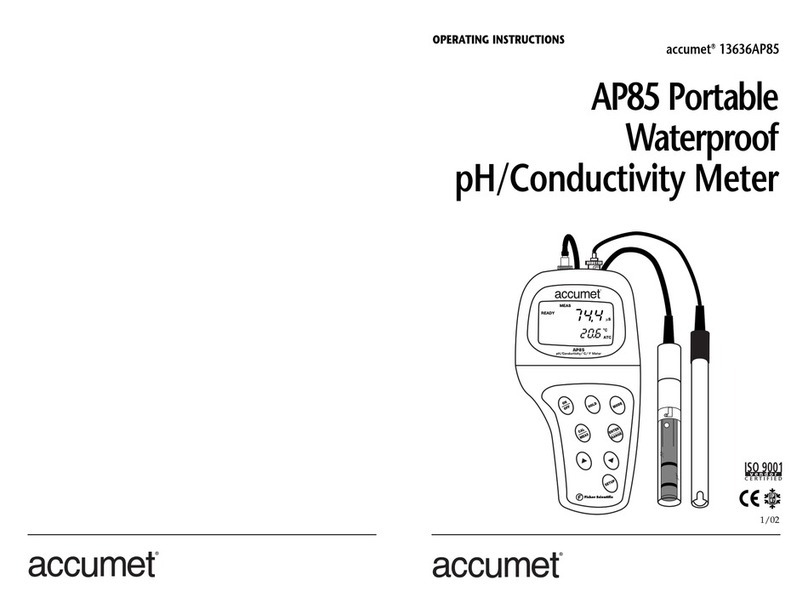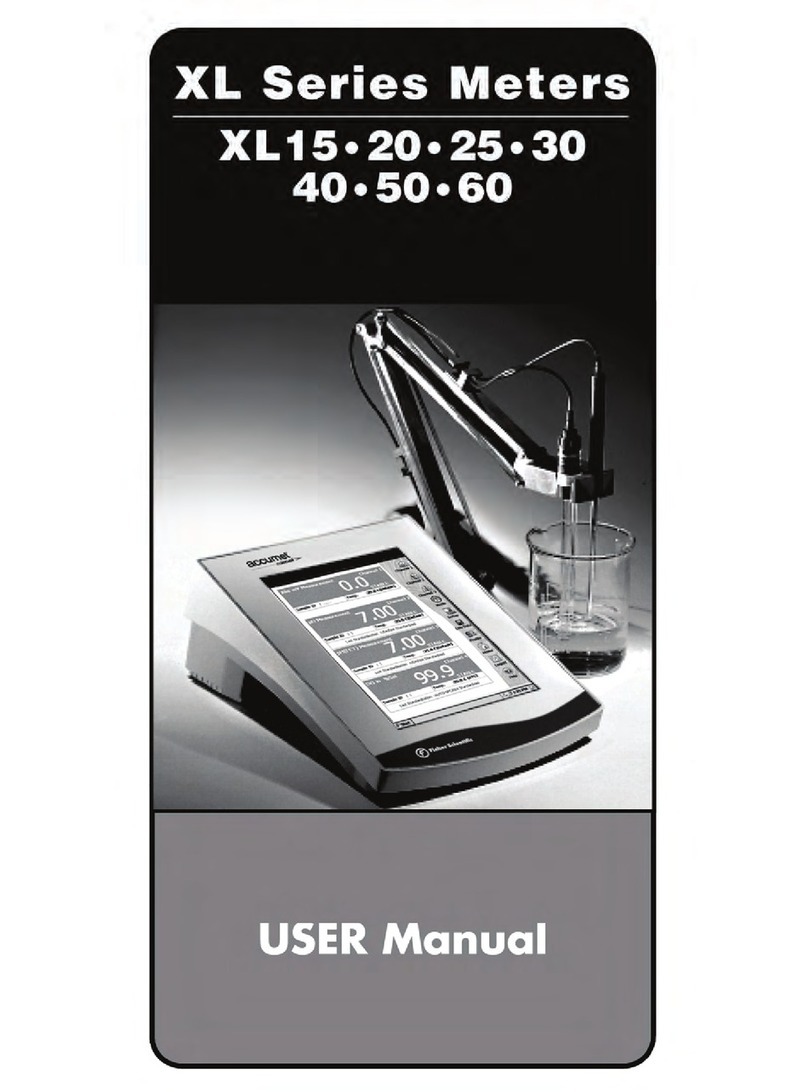2
Table of Contents
1. Introduction............................................................................................4
2. Display and keypad functions .............................................................5-6
2.1 Display...................................................................................................................................5
2.2 Keypad...................................................................................................................................6
3. Preparation..........................................................................................7-9
3.1 Inserting the batteries..........................................................................................................7
3.2 Probe information — Connecting the probes...............................................................8-9
4. Calibration.......................................................................................10-19
4.1 Important information on meter calibration .................................................................10
4.2 Preparing the meter for pH calibration..........................................................................11
4.3 pH calibration................................................................................................................12-13
4.4 Preparing the meter for DO calibration..........................................................................14
4.5 Dissolved oxygen calibration in % saturation..........................................................15-16
4.6 Dissolved oxygen calibration in mg/l (ppm) mode ...............................................17-18
4.7 Temperature calibration....................................................................................................19
5. Measurement...................................................................................20-24
5.1 Taking DO readings......................................................................................................20-21
5.2 Taking pressure/salinity compensated DO measurements...................................21-22
5.3 Taking pH readings......................................................................................................23-24
5.4 Manual temperature compensation................................................................................25
6. Hold function........................................................................................26
7. Backlit LCD............................................................................................27
8. Advanced SETUP functions..............................................................28-55
8.1 Advanced setup mode overview................................................................................29-31
pH measurement mode overview ................................................................................29
% saturation measurement mode overview ...............................................................30
mg/l (ppm) measurement mode overview.................................................................31
8.2 pH mode—Program P1.0: Viewing previous calibration data....................................32
8.3 pH mode—Program P2.0: Viewing electrode data..................................................33-34
P2.1 Electrode offset.........................................................................................................33
P2.2 Electrode slope .........................................................................................................34
8.4 pH mode—Program P3.0: pH measurement configuration...................................35-37
P3.1 READY indicator and auto endpoint function....................................................35
P3.2 Selecting number of pH calibration points..........................................................36
P3.3 Selecting °C or °F .....................................................................................................37
































